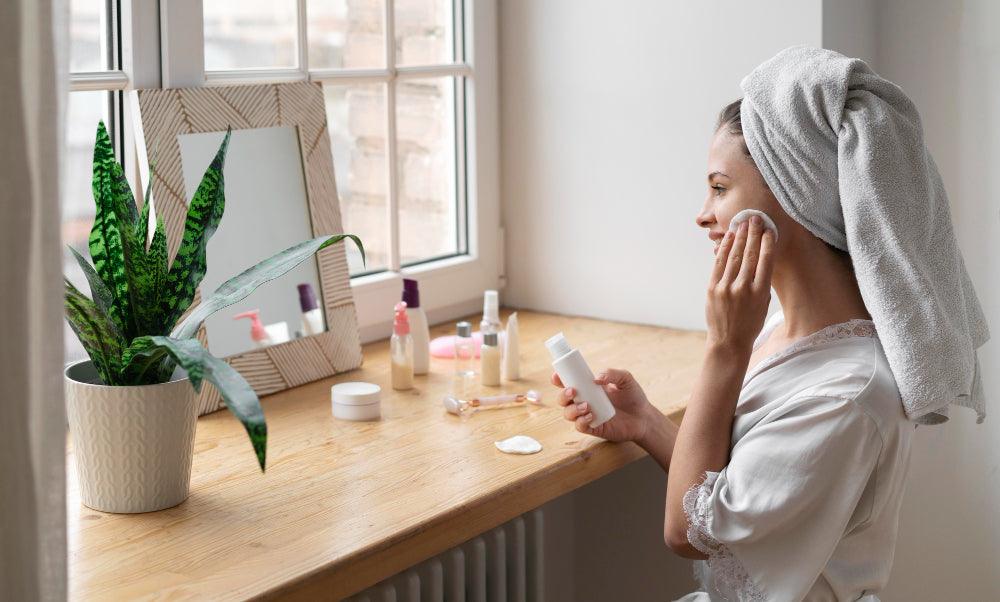What Order to do Skincare?


The realm of skincare, a critical component of overall health and wellbeing, demands meticulous attention. The significance of applying skincare products in the correct sequence is paramount, a point underscored by dermatologists and skincare experts globally. Dr. Emily Roberts, a dermatologist, emphasizes, "Applying skincare products in the proper order ensures maximum efficacy and helps your skin receive the full benefits of each product." This practice is not just about enhancing appearance; it plays a vital role in skin health. Incorrect application can lead to reduced effectiveness or, worse, skin irritation and other issues.
Identifying one's skin type is a foundational step in curating an effective skincare routine. Skin types are generally categorized as oily, dry, combination, sensitive, or normal. Each type has unique characteristics and requirements. For instance, oily skin, characterized by excess sebum production, may require lightweight, non-comedogenic products, whereas dry skin, prone to flakiness and tightness, benefits from richer, more hydrating formulations. Dr. Laura Green, a skincare researcher, states, "Understanding your skin type is crucial because it directly influences the types of products that will work best for you." She further adds that using products not suited for one's skin type can lead to adverse reactions or ineffective results.
The standard skincare routine comprises several key steps, each serving a distinct purpose. Cleansing removes dirt and excess oils, toning balances the skin's pH, serums deliver concentrated active ingredients, moisturizers hydrate and protect the skin, and sunscreen guards against UV damage. According to a survey by the International Dermatology Institute, over 90% of dermatologists agree that following these basic steps in the correct order significantly impacts the health and appearance of the skin.
Cleansing, the first step in any skincare routine, removes dirt, oil, and other impurities. The choice of cleanser should be tailored to your skin type. For example, a gentle, hydrating cleanser may benefit dry skin, while oily skin may require a formula with salicylic acid. Dr. John Miller, a skincare specialist, advises, "Select a cleanser that aligns with your skin type and concerns. This ensures effective cleaning without stripping the skin of its natural oils."
Toners, often overlooked, play a vital role in rebalancing the skin's pH and preparing it for subsequent products. Dr. Susan Clark, a dermatologist, recommends, "Choose a toner based on your skin's needs – hydrating for dry skin, and oil-control for oily skin." This step is essential for enhancing the skin's absorption capacities.
Serums are concentrated solutions targeting specific skin concerns like aging or acne. Selecting the right serum is critical. Dr. Roberts suggests, "Opt for serums with active ingredients that address your particular skin issues." These treatments are to be applied before heavier creams and oils.
Eye creams are formulated for the delicate skin around the eyes and can address issues like puffiness and dark circles. Application should be gentle, using the ring finger to dab the product lightly.
Moisturizers are essential for all skin types, providing hydration and forming a barrier to protect the skin. Dr. Green states, "Choose a moisturizer based on your skin type – richer for dry skin, lighter for oily skin."
Sunscreen is vital for protecting the skin from UV damage. A broad-spectrum SPF of at least 30 is recommended by most dermatologists, including Dr. Miller, who advises, "Apply sunscreen every day, regardless of the weather, as UV rays can penetrate clouds."
Exfoliation is an essential step in enhancing skin texture and promoting cell turnover. Dermatologists recommend exfoliating 2-3 times weekly for most skin types. However, sensitive skin may require less frequent exfoliation. Dr. Sandra Lee, a renowned skincare expert, advises, "The key is to choose the type of exfoliator that suits your skin. Chemical exfoliators, like AHAs and BHAs, are effective for acne-prone and oily skin, whereas physical exfoliators are better suited for more resilient skin types." Over-exfoliation can lead to skin barrier disruption, emphasizing the need for moderation.
Face masks offer targeted treatment for various skin concerns. From hydrating masks for dry skin to clay masks for oily skin, the options are vast. Dr. Lee suggests, "Incorporate face masks into your routine once or twice a week, depending on your skin's needs, for an added boost." The timing of face masks in a routine is also crucial – typically after cleansing and before moisturizing.
There are distinct differences between morning and evening skincare routines. The morning routine focuses on protection from environmental factors, with a light moisturizer and sunscreen being essential. Dr. Emily Roberts emphasizes the importance of sunscreen: "A broad-spectrum SPF is non-negotiable in the morning routine." In contrast, the night routine is centered around repair and rejuvenation, with heavier products like night creams and retinoids. "Using retinoids and heavier moisturizers at night supports skin repair while you sleep," says Dr. Roberts.
A common mistake in skincare routines is the incorrect order of product application, which can hinder the effectiveness of the products. Another frequent error is over-exfoliation, leading to skin irritation and damage. Dr. Sandra Lee advises, "Be mindful of your skin's response and adjust your routine accordingly. Less is often more in skincare." Additionally, neglecting sunscreen is a significant oversight that can lead to premature skin aging and increased risk of skin cancer.
While certain steps can be adjusted based on individual needs, key steps like cleansing, moisturizing, and sun protection should never be skipped.
It's generally advised to wait about a minute between applications to allow each product to absorb properly.
Yes, adapting your skincare routine to seasonal changes can be beneficial. For instance, heavier moisturizers might be more suitable in winter.
In conclusion, understanding the correct order and method of applying skincare products is crucial for optimal skin health. Tailoring your skincare routine to your specific skin type, being mindful of common mistakes, and adapting to changing needs is key to maintaining healthy skin. As Dr. Sandra Lee states, "A consistent and well-planned skincare routine is the cornerstone of maintaining skin's health and vitality." Dedication to a personalized skincare regimen is essential for long-term skin health and radiance.








Plus get the inside scoop on our latest content and updates in our monthly newsletter.